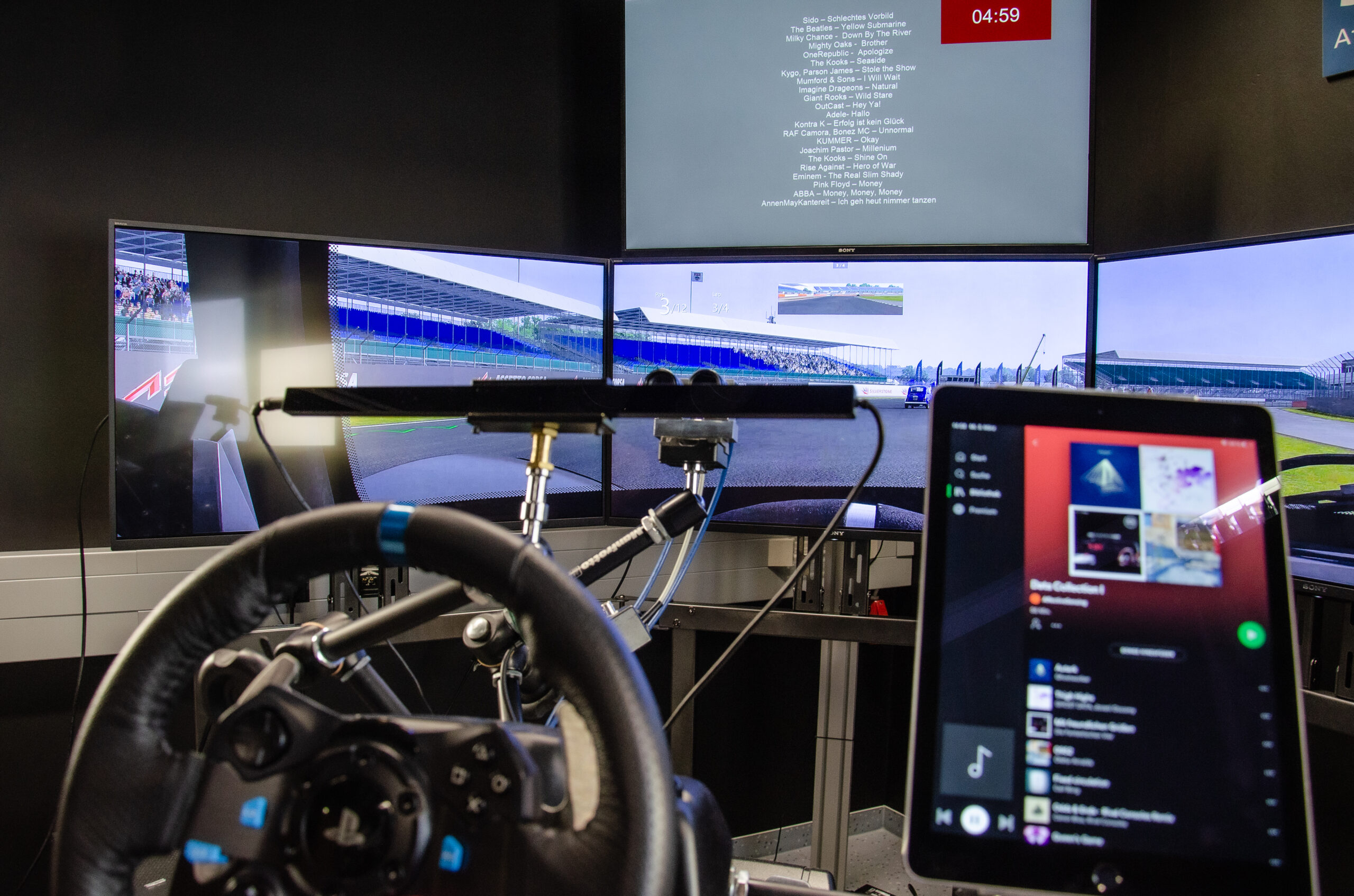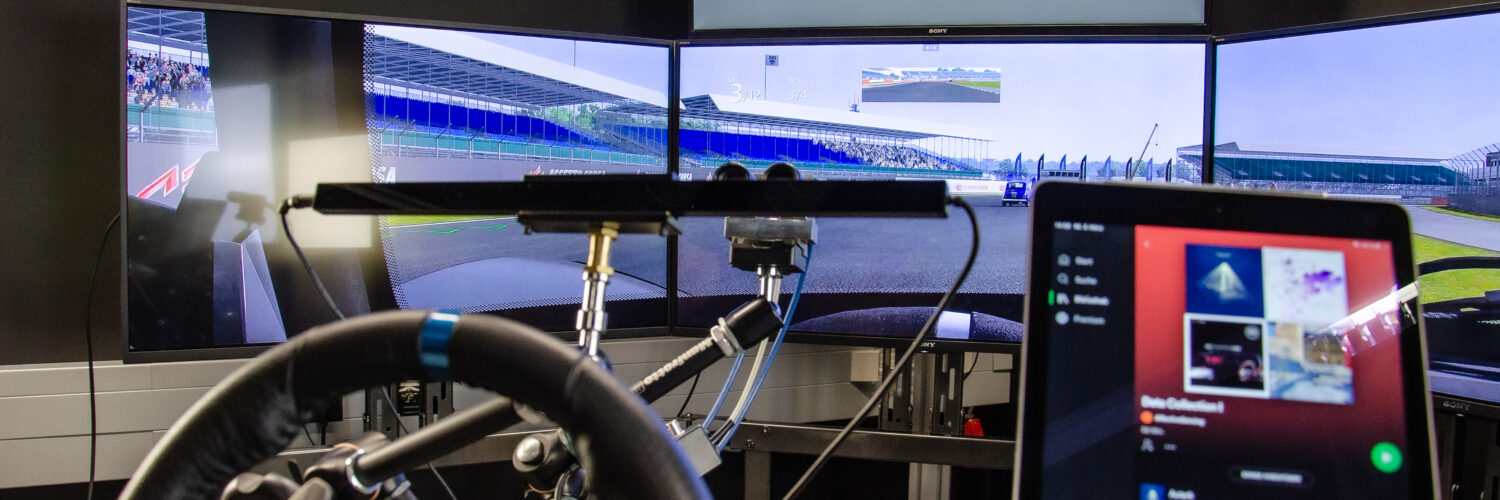To advance the development of innovative driver monitoring systems, it is essential to acquire multimodal data that includes driving behavior, driver states, well-being, and cognitive load. However, to achieve high-quality studies, robust infrastructure is essential. This is where the driving simulator at Fraunhofer IIS comes in, providing the ideal environment to collect multimodal data. Here’s an overview of the technology of our driving simulators and their applications.
The technology behind the wheel
Fraunhofer IIS has two driving simulators: one located on our premises and one in the psychophysiological lab at the Center of Center for Sensor Technology and Digital Medicine at the Universitätsklinikum Erlangen. Key components and configuration of the driving simulators include
- multiple monitors that enhance the immersive driving experience,
- an implemented hydraulic system that simulates realistic vehicle movement through
cornering, vibrations, and tilting movements, - cameras,
- lighting,
- systems for multimodal biosignal acquisition,
- parameters such as gaze direction or blink frequency, which can be recorded
continuously to assess the driver’s attention in specific situations, and - health monitoring while driving.
Speeding Ahead: Flexibility for innovative improvements
The key advantage of the automotive lab is its flexibility: The setup can be tailored to meet the specific requirements of each study or project. Additionally, all technologies used in our exposure cabin can be integrated into the driving simulator.
You choose …
- the simulator to use: taking into account various factors, such as the study’s target group (conducting the study on a hospital’s premises can be advantageous when it comes to selecting study subjects),
- the number of cameras included,
- the parameters to focus on, e.g., the importance of gaze direction,
- the driving scenario,
- the modalities that are measured, and
- the driving scenario, along with the decision on whether to test your own AI algorithm or to utilize our extensive expertise in developing a robust algorithm tailored specifically for you, based on the acquired data.

The simulators’ flexibility opens up a myriad of possibilities for capturing drivers’ states. To get more of an idea of how the lab is already contributing to change in the automotive landscape, have a look at the SEMULIN project or our study on cognitive load in autonomous driving.
By leveraging expertise from various fields and projects, our team can help determine the optimal use of the simulator and provide access to additional resources, such as ADABase, a multimodal dataset on psychological overload of drivers. Alternatively, you can combine the driving simulator with other tools, like the Mobilization Seat, developed by Daimler Research and Fraunhofer IIS, CardioTEXTIL, or our new mobile and extendible sensor platform maphera®.
Learn more about our research infrastructure.
Image copyright: Fraunhofer IIS







Add comment